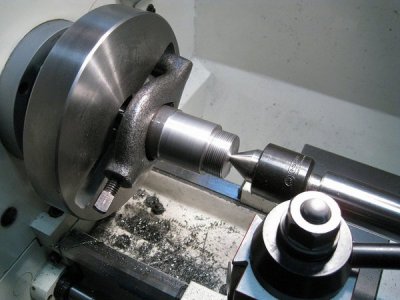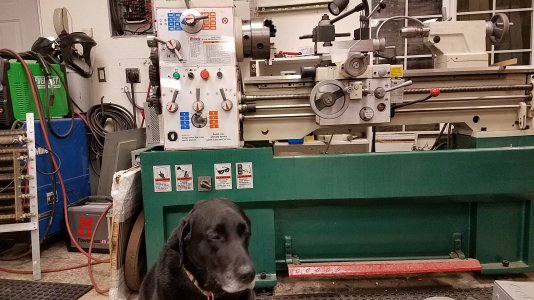- Joined
- Mar 2, 2018
- Messages
- 232
After literally years of anticipation, I finally have a shiny new BS-0 dividing head. I took the chuck off, put the center in, and I've been scratching my head trying to figure out how the dog is supposed to drive. I figured the Chinese manual was worthless, so I downloaded a copy of the real Brown & Sharpe, only to find that the Chinese manual is actually better.
I can find endless pictures of the dog mounted on this thing, but I can't find one picture of how the dog connects to whatever it supposed to drive the thing. One of the holes in the direct index plate, I'm assuming, but how on earth?
It looks like the Chinese copy is true to the original in this respect. I can't find any pictures of the real deal performing this action either. I'm just baffled. I mean I'm not totally baffled. I can invent a solution, to be sure, but one would think a solution should already be readily available, and self-evident.
Not so much.
Apologies if I picked the wrong place to ask this. Feel free to move my post to a different forum.
I can find endless pictures of the dog mounted on this thing, but I can't find one picture of how the dog connects to whatever it supposed to drive the thing. One of the holes in the direct index plate, I'm assuming, but how on earth?
It looks like the Chinese copy is true to the original in this respect. I can't find any pictures of the real deal performing this action either. I'm just baffled. I mean I'm not totally baffled. I can invent a solution, to be sure, but one would think a solution should already be readily available, and self-evident.
Not so much.
Apologies if I picked the wrong place to ask this. Feel free to move my post to a different forum.



